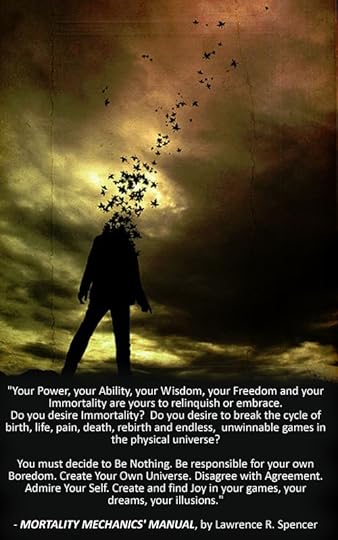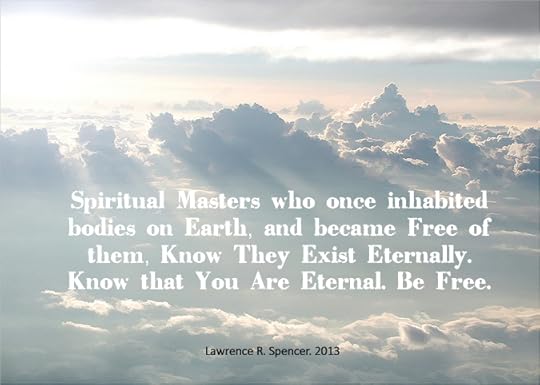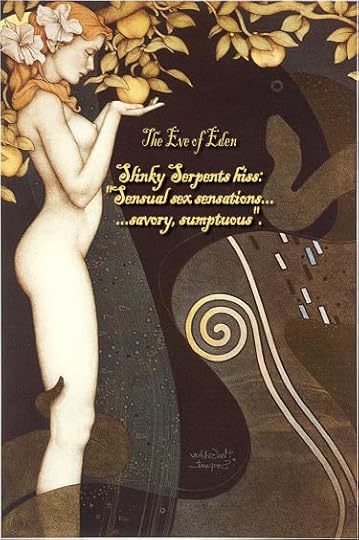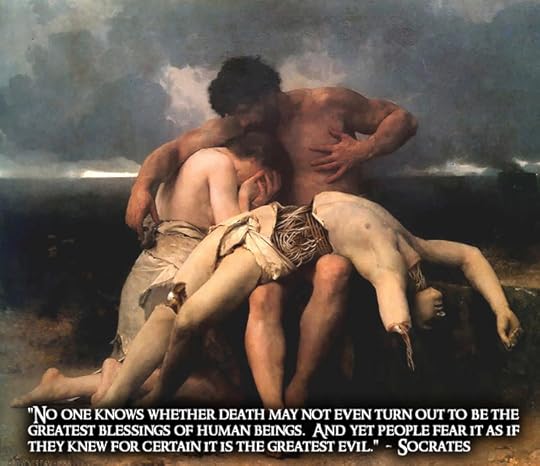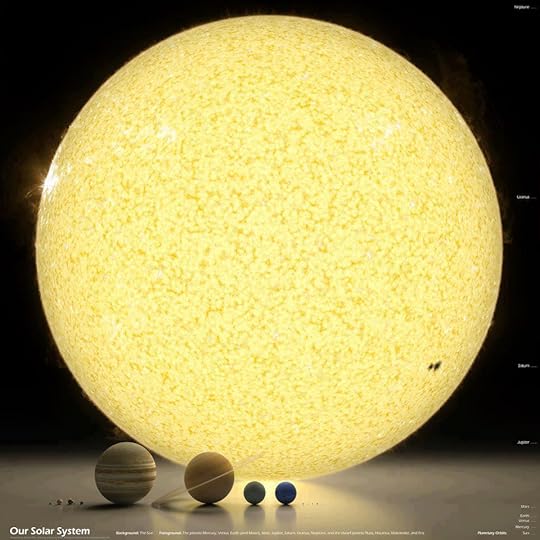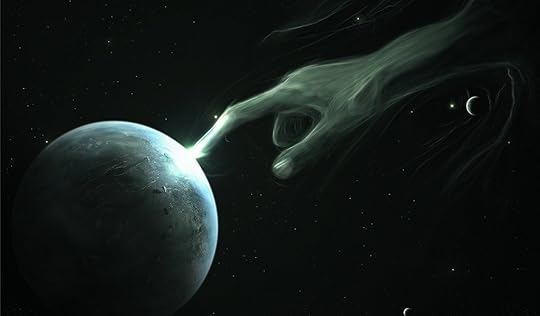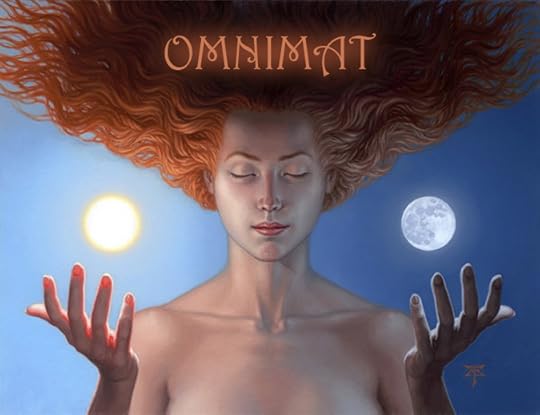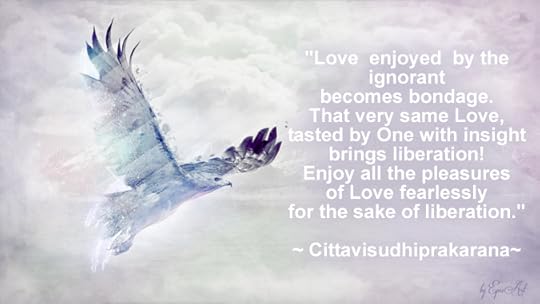Lawrence R. Spencer's Blog, page 563
March 31, 2013
BE NOTHING
March 29, 2013
BE FREE
March 28, 2013
PATRIARCHAL SOCIETY
"SLINKY SERPENTS HISS: SENSUAL SEX SENSATIONS...SAVORY, SUMPTUOUS"
Haiku Poem, by Lawrence R. Spencer
__________________________________________________
It is the usual trait of Men, who inhabit fragile forms of flesh, to blame their addictions and inability to be responsible for their own ignorance and brutality, AND to blame others for the own disabilities. Such is the classic case of the authors of the Bible, and other ancient mythological texts in the Western World. In about 600 BCE while the Jews were captive in Babylonia, the few scribes that could actually write, compiled and committed to paper their own pathetic history. Much of what they wrote was borrowed or stolen from earlier, ancient civilizations who inhabited Earth for thousands of years before these band of pitiful slaves and peasant. During the entire history of human beings on Earth, nearly every society, with very few exceptions, we patriarchal. Simply stated, men ruled and ran societies solely and ONLY because the had larger muscles, less courage and much less empathy, compassion and ability to love than the female half of the population. Females, by virtue of smaller muscles, and less inclination to beat and murder their fellows, have been literally forced into slavery during the entire history of Earth.
So, it is very easy to understand that one of the FEW WEAPONS that Womankind possess to sustain their own survival, to fight back and protect themselves in a race of brutal idiots, it to develop feminine "charms": beauty of face, of form. Wisdom. Practical survival sensibilities. And sexual wiles that men cannot not resist. These abilities also have to benefit of sustaining the population. Child birth, the most painful ordeal that ANY human body can possibly endure, cannot be done by men. Men are too cowardly and weak for the truly agonizing labor of pushing a bowling ball through a hole the size of a small apple!
However, the cowardice and stupidity of Men continues without inspection and remains unchallenged by the men who are truly the Source of Evil on Planet Earth -- Patriarchal Priests and Mindless Sheep. Women are villainized by weaklings and cowards -- PRIESTS , to be specific -- as "Evil"..... In the mythology of the "Garden of Eden', it is the female EVE who is portrayed to be "evil" by the Priests who made up these farcical stories. The same cowards -- most of whom have never had sex with anyone except each other, or small boys, or goats -- cram their Patriarchal Propaganda down the throats of the mindless sheep who read them, century after century! After all the thousands and thousands of years of this brutal stupidity, one could easily argue that Females would be justified in murdering every Priest in their sleep, and any other "man" who continues to brutalize women, while blaming these innocents for their own addiction to sexual sensation! Or, in the case of Priests, their own inability to understand the meaning of Love, Compassion, Aesthetic, Kindness and Nurturing.... the basic characteristics of Women.
Lawrence R. Spencer -- Copyright 2013.

March 27, 2013
LIKE A PRAYER
"Life is a mystery, everyone must stand alone
I hear you call my name
And it feels like home
When you call my name it's like a little prayer
I'm down on my knees, I wanna take you there
In the midnight hour I can feel your power
Just like a prayer you know I'll take you there
I hear your voice, it's like an angel sighing
I have no choice, I hear your voice
Feels like flying
I close my eyes, Oh God I think I'm falling
Out of the sky, I close my eyes
Heaven help me
When you call my name it's like a little prayer
I'm down on my knees, I wanna take you there
In the midnight hour I can feel your power
Just like a prayer you know I'll take you there
Like a child you whisper softly to me
You're in control just like a child
Now I'm dancing
It's like a dream, no end and no beginning
You're here with me, it's like a dream
Let the choir sing
When you call my name it's like a little prayer
I'm down on my knees, I wanna take you there
In the midnight hour I can feel your power
Just like a prayer you know I'll take you there
Just like a prayer, your voice can take me there
Just like a muse to me, you are a mystery
Just like a dream, you are not what you seem
Just like a prayer, no choice your voice can take me there
Just like a prayer, I'll take you there
It's like a dream to me!"

GREATEST BLESSING
( Painting: "Death of A Cyborg" )
____________________________________________________
LISTEN TO A SEGMENT OF THE AUDIOBOOK VERSION OF "1001 Things To Do While You're Dead"
1001 ThingsTo Do While You're Dead, read by Kendra Hoffman

March 25, 2013
REALITY IS SHIT
REALITY IS SHIT! SHIT IS REALITY. IT'S ALL SHIT! IT'S NOTHING BUT SHIT! THE ENTIRE PHYSICAL UNIVERSE IT NOTHING BUT SHIT! IT'S ALWAYS BEEN SHIT! IT WILL ALWAYS BE SHIT! THERE IS NOTHING ABOUT IT THAT IS NOT SHIT! IF YOU THINK THE PHYSICAL UNIVERSE IS ANYTHING EXCEPT SHIT, THEN YOU ARE A STUPID PIECE OF SHIT!!!! IT'S ALL A LIE! IT'S A DELUSION! SHIT IS SHIT IS SHIT!!!!!! IT IS WHAT IT IS!

March 24, 2013
PERPETUAL ILLUSION
The physical universe provides illusions of perpetual scenery for an Immortal Spiritual Being.
There is no need for us to create our own.
Our thoughts can be free from effort, relieved of the continual burden of Self-Sustained Imagination.
There is no need for incessant Creation of Our Own Energy....
Sit calmly and watch the passing objects, energy and images of a universe that is not our own.....
Be amused, bemused, hypnotized and entertained..... be peaceful.... be silent.... do not create.... do not create....
Let the perpetual illusions we share as Reality release and heal your boredom in The Eternal Now....
Exist in a Universe that is not Your Home...
Exist.... Exist..... Exist.... Exist....
The Eternal Now Is The Eternal Now....
Reality is not Your Home....

March 23, 2013
THINK BIGGER!
(Click on each Image to Open and Enlarge in a New Window)
The relative sizes of the sun and planets in the Earth solar system
NOW, Imagine the YOU helped to create them, in a long-forgotten, past.....
Or, that we ALL continue to create them together, as Immortal Spiritual Beings!

March 22, 2013
THE OMNISCIENT and OMNIPOTENT MATRIARCH
" "All-Mother" is a philosophy in which the behavior or conduct of an individual and groups of IS-BEs* is adjudicated based on the logical premise that in order to sustain optimum freedom, order and serenity for all IS-BEs, each IS-BE must serve all IS-BEs. (*IS-BE = Immortal Spiritual Beings, which includes human beings)
This premise is not intended to eliminate disagreements between IS-BEs, but to mitigate destruction or chaotic behavior between them.
"All-Mother" assures the inherent right of an individual IS-BE to approach, depart from, or not interact, with other IS-BEs while maintaining an optimum serenity.
The purpose of The Domain is to defend the right of an individual or group of IS-BEs to create a universe, or not, at their own discretion.
It has been observed that when responsibility for maintaining organization within the co-created universe shared by all IS-BEs is not defended and preserved, each individual IS-BE is deprived of the freedom assured by the power of a collaborative, creative will and combined power.
The Omniscient and Omnipotent Matriarch (abbrev: Omnimat) is an IS-BE who acts as magistrate of The Domain.
Through preeminent power, wisdom and benevolence, Omnimat supervises and enforces the principle of All-Mother within The Domain.
Omnimat does not create, destroy or alter universes.
Omnimat may, or may not, enforce penalties or restrictions upon IS-BEs when violations of the principle of All-Mother occur within The Domain.
The discretion and judgment of Omnimat are inviolate.
Omnimat enforces all judgments.
To the degree that IS-BEs of The Domain do not need or desire admiration, and are not compelled to "play" a game at all times, the power, stability and serenity of The Domain remains relatively stable, when compared to the physical universe.
(The physical universe is, by definition, an infinite, icy void cluttered with random sources of savage energy combined with mindless chunks of matter. The massive and chaotic construction of the physical universe is utterly antipathetic to the spiritual "nothingness" which is the intelligent source of life forms and of universes.)"
-- Excerpt from the book, THE DOMAIN EXPEDITIONARY FORCE RESCUE MISSION, by Lawrence R. Spencer
LISTEN TO A SAMPLE OF THE NEW AUDIOBOOK
Click the LINK ABOVE to go to www.Audible.com and CLICK ON "Sample"


